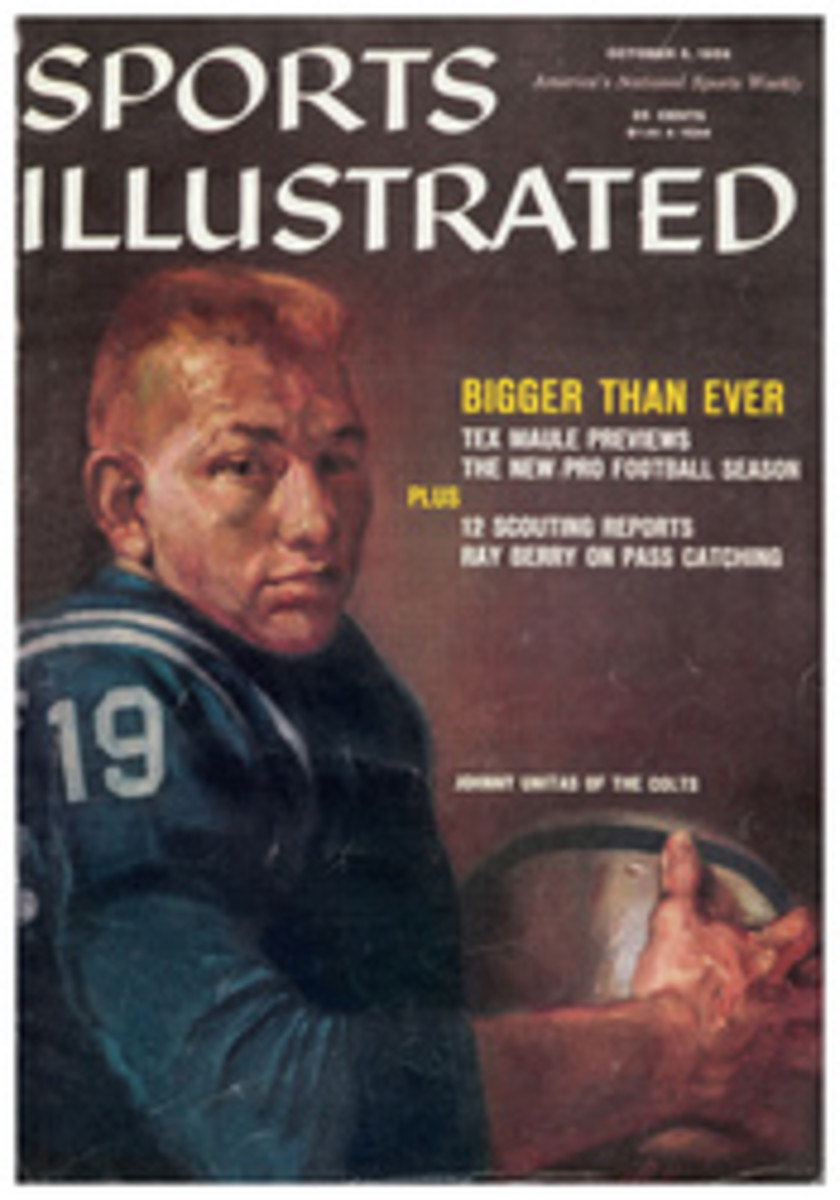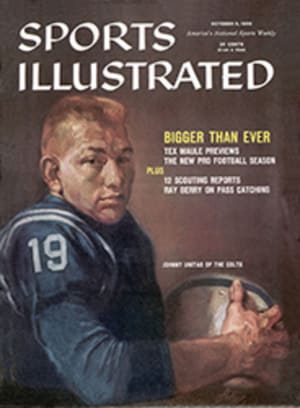
A most happy season
Even the dreamer who invented Abner Doubleday couldn't have thought up a more improbable baseball season. The Yankees finally lost a pennant and the White Sox finally won one. The National League had a terrific three-team race that went into the last week of the season. And even then, it took a playoff to discover who would play in the World Series. Best of all, as far as the baseball owners were concerned, attendance was up nearly a million and a half over last year.
NATIONAL LEAGUE
The Milwaukee Braves woke up just in time. After playing half the year as if they didn't really care, the Braves put on a desperate rush that tied them with the Dodgers on the last day of the season. Bad fielding (the loss of Schoendienst at second hurt the most) hampered the Braves all year. Their hitting was good and so was their pitching. In fact, with two 20-game winners, and Aaron and Mathews with 84 homers and 236 RBIs between them, it should have been an easy year.
The Los Angeles Dodgers, by all rights, didn't belong in the pennant race at all. Their hitting was weak (sixth in the league), and they didn't have much power. Their pitching, though fairly good, was inclined to be erratic. But the Dodgers had plenty of depth, fairly good defense and speed—and, most of all, desire.
The San Francisco Giants went as far as the tired arms of Jones, Antonelli, Sanford and McCormick could carry them. The four pitched over 200 innings apiece and accounted for 75% of the Giant pitching chores. A week and a half before the season ended they wore out, and the Giants lost five straight games (for the first time all year). The Series still might have been played in Candlestick Park if the Giants' defense had held up and the Giants' hitters had been more consistent.
The Pittsburgh Pirates were the biggest disappointment of the year. Given a good chance for the pennant last spring, the Pirates started off with five straight losses and were never in contention. A tight defense and strong pitching were supposed to compensate for a lack of power. But the defense faltered and the pitching slipped.
The Chicago Cubs depended upon a bunch of hard-hitting veterans and a green pitching staff to carry them. The young pitchers did well enough, but most of the aging sluggers collapsed. In 1958, Thomson, Moryn, Long and Walls banged out 91 home runs and knocked in 306 runs. This year they hit 47 homers and had 170 RBIs (Ernie Banks almost equaled this all by himself with 45 home runs and 143 RBIs).
The Cincinnati Reds poked along playing .438 ball (35-45) for half a season, until Manager Mayo Smith was fired. Under Fred Hutchinson, they improved to a .527 pace (39-35). Once again, the Reds showed how important pitching is. The team had the best-balanced hitting attack in the league: Pinson, Robinson and Temple all batted over .300, and the team was first in batting and runs scored. But the pitching staff allowed the most runs in the league.
The St. Louis Cardinals also suffered for lack of pitching (theirs was even worse than the Reds'). They, too, had three .300 hitters—Cunningham, Boyer and White—and a good team batting average. But the Cards didn't have the explosive power of the Reds and were sixth in homers, seventh in runs scored.
The Philadelphia Phillies had no trouble fixing the blame for their finish. They were last in hitting, last in fielding, last in pitching.
AMERICAN LEAGUE
Last spring, knowing baseball men said that the slick-fielding Chicago White Sox couldn't possibly win the pennant unless they added some power. Well, the Sox hit even fewer home runs in 1959 than they did in 1958 (and they were dead last in the league both seasons). The pennant-winning difference was the White Sox pitching staff. It developed into the best in baseball. For the first time Chicago had, in Turk Lown and Gerry Staley, two thoroughly reliable relief pitchers.
The Cleveland Indians, on the other hand, were loaded with power (first in home runs and runs scored). But their pitching was upset when Herb Score failed to come back (9-11) after two seasons of injuries. An inability to beat Chicago (7-15) killed whatever chances they had.
The New York Yankees were just another team fighting to make the first division. All the hitting, pitching, defense and depth that were supposed to make the Yanks invincible once again, vanished when the season started. The big three of Ford, Turley and Larsen slumped from last year's 44-20 record to 30-28. Mantle & Co. were led in batting by singles-hitting Bobby Richardson. There were no bright young replacements to step right up when Skowron was injured and veterans like McDougald and Bauer slowed down.
The Detroit Tigers obtained Yost, Bridges, Mossi and Narleski in preseason trades, and that made a lot of people feel that this team of talented individuals might win a pennant at last. But a horrendous 2-15 start killed their chances and cost Manager Bill Norman his job. The well-seasoned Jimmie Dykes took over and hustled the Tigers to within a half game of first by mid-June. Then they spent the rest of the year playing sub-.500 ball and barely made the first division. The Tigers had no trouble scoring runs. However, the touted pitching staff never did come through.
It was the worst of times for the Boston Red Sox. Ted Williams became a part-time .250 hitter; Mike Higgins started the season as manager and Billy Jurges finished it; every other team in the league increased its attendance except the Sox.
The Baltimore Orioles finished ahead of two other teams only because of their wonderful pitching. Here was a ball club that could neither hit nor score (seventh in batting and homers, last in runs), and—surprisingly for a Paul Richards team—couldn't field, either. Still, the Orioles managed to hang in third place most of the season. Hoyt Wilhelm won his first nine games, and Gus Triandos bashed 20 home runs by All-Star Game time. But Wilhelm was 6-11 the rest of the year and Big Gus, hampered by injuries and the frustration of chasing Wilhelm's knuckler, hit only five more homers.
The Kansas City Athletics had a high team batting average, but it didn't mean much. They got the men on base, but they couldn't get them home. Weak pitching (worst ERA in majors) and injuries to key players—Maris, Tuttle, Cerv, Chiti—further ruined the A's chances for a more respectable showing.
The Washington Senators had quite a season for a last-place ball club. For half the year they were the glamour team of the League. Home runs flew out of Griffith Stadium. An obscure bonus player named Harmon Killebrew hit so many homers he was voted the All-Star third baseman. The Senators moved up to fifth place. Then the home runs stopped. The Senators had nothing else to sustain them (last in batting, last in fielding). They lost 18 in a row and fell into the cellar.
[originallink:10493851:42468]

